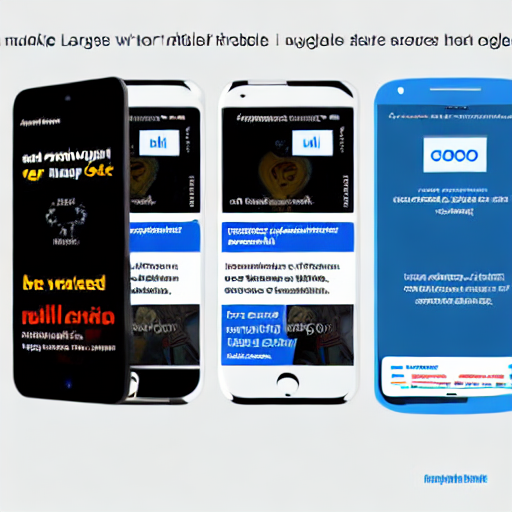

In the dynamic world of digital marketing, Google Ads remain a cornerstone of many businesses’ strategies. However, simply running an ad campaign isn’t enough. The success of your campaign hinges significantly on the experience you provide once a user clicks through. This is where landing pages come in. A well-designed landing page acts as the crucial bridge between your advertisement and your desired conversion – whether that’s a purchase, a sign-up, or a lead generation. Traditionally, landing pages were often designed with desktop users in mind. However, with mobile devices accounting for a massive portion of web traffic – often exceeding 60 percent – a mobile-first approach is no longer optional; it’s essential. This article delves into the critical importance of mobile-first landing pages within the context of Google Ad management, providing a comprehensive guide to design, optimization, and best practices.
Before diving into mobile-first design, let’s establish why landing pages are so vital within a Google Ads strategy. Google Ads are incredibly effective at driving targeted traffic to your website. However, a user clicking on your ad doesn’t automatically know what you want them to do. They’re presented with your homepage, which might be cluttered, overwhelming, and not directly related to the ad they clicked on. A landing page, on the other hand, is specifically crafted to align with the ad’s message and guide the user towards a single, clear action. It’s about delivering on the promise made in your ad. Think of it this way: your Google Ad is the initial hook, and your landing page is the rod that reels the user in.
Without a dedicated landing page, you’re essentially throwing spaghetti at the wall to see what sticks. This leads to high bounce rates, low conversion rates, and wasted ad spend. By directing users to a relevant landing page, you increase the likelihood of a positive interaction and a successful conversion. Furthermore, landing pages allow you to track specific campaign performance, providing valuable data for optimization.
The shift to mobile-first isn’t just a trend; it’s a fundamental change in how people access information and conduct business. Consider these statistics: As of late 2023, over 56% of all website traffic comes from mobile devices. This number continues to grow. Furthermore, mobile users tend to be in a hurry and have shorter attention spans. They’re often searching for information on the go, using their phones during commutes, breaks, or while waiting in line. Therefore, a landing page that isn’t optimized for mobile will likely be abandoned before the user can complete the desired action.
Designing a mobile-first landing page means prioritizing the user experience on smaller screens. This involves considering factors like screen size, touch navigation, and data usage. It’s about ensuring that your message is clear, concise, and easily accessible on a mobile device.
Let’s break down the essential components of a successful mobile-first landing page:
Here are some specific techniques to implement for mobile optimization:
The success of your mobile-first landing page hinges on its seamless integration with your Google Ad campaigns. Here’s how to ensure a smooth connection:
Tracking the right metrics is crucial for evaluating the effectiveness of your mobile-first landing page. Here are some key metrics to monitor:
In conclusion, creating mobile-first landing pages is no longer a best practice; it’s a necessity for any business running Google Ad campaigns. By prioritizing the mobile user experience, optimizing your landing pages for speed and usability, and continuously monitoring your key metrics, you can significantly improve your campaign performance and maximize your return on investment. Remember, your landing page is the final stage of the customer journey, and it’s your last chance to convert a click into a valuable lead or sale. Embrace a mobile-first approach, and you’ll be well on your way to achieving your marketing goals.
Ready to transform your Google Ad campaigns? Contact us today for a consultation on creating a high-converting mobile-first landing page.
Keywords: Mobile Landing Page, Google Ads, Responsive Design, Conversion Rate, A/B Testing
Meta Description: Learn how to create mobile-first landing pages that convert Google Ads clicks into valuable leads and sales. Optimize your campaigns for a better ROI.
Image Alt Text: Mobile landing page design, Google Ads, responsive design, conversion optimization.
Copyright 2023 [Your Company Name]
Tags: mobile landing page, Google Ad campaign, landing page optimization, conversion rate, mobile design, user experience, landing page design, ad campaign ROI, Google Ads
[…] these campaigns has become paramount. Two primary approaches consistently arise: leveraging a Google Ad Management Agency or building an in-house team. Both options offer distinct advantages and […]